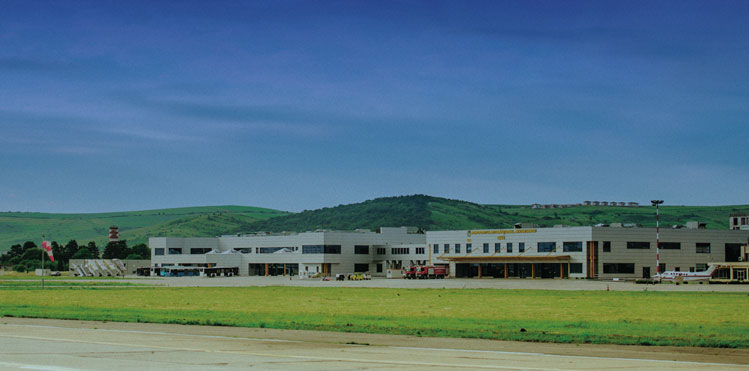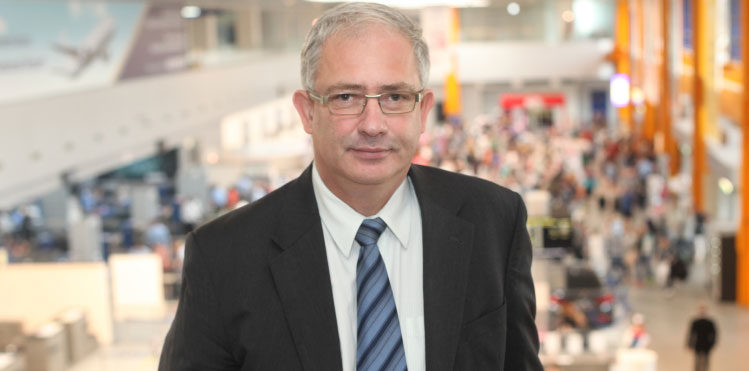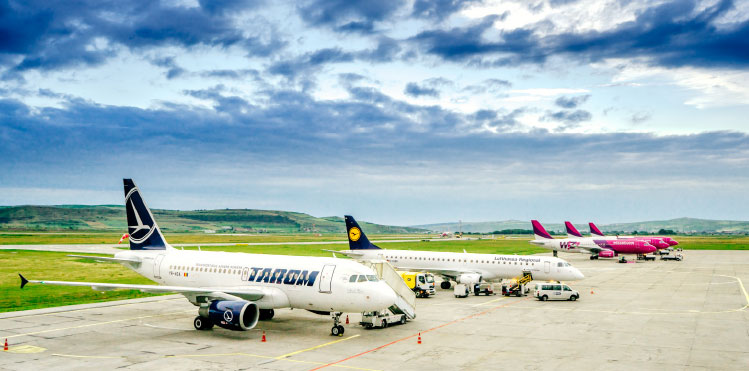David Ciceo, Managing Director of Cluj “Avram Iancu” International Airport, interviewed by Ross Falconer.

Over the last two decades, sustained and rapid traffic development has led Cluj “Avram Iancu” International Airport to its current position as Romania’s biggest regional airport. The gateway to Transylvania has grown from 32,000 passengers in 1996 to almost two million in 2016, with its location just 10km from Cluj-Napoca city centre (Romania’s second-biggest business centre) combined with a strategy of infrastructure and route development, key to that progression.
2016 will see a record 1.8 million passengers handled (+21% year-on-year) driven by a doubling of the number of airlines operating at Cluj from four to eight, and 50% growth in the route network from 25 to 37 destinations.
David Ciceo has been Managing Director of Cluj “Avram Iancu” International Airport throughout the 20 years of sustained development, and has been its real driving force. In conversation with Airport Business, his passion for the success of the airport and the whole region shines through. “This journey as Managing Director of Cluj International Airport always seemed to bring an equivalent number of rewards and new challenges in our activity,” he says. “For example, an important step in this journey happened in September 1996, when we obtained the government decision which granted Cluj International Airport the right to start international flight operations. As a result, we had the opportunity to open international traffic, but the main challenge of this reward was how to enable airlines to reach the Cluj Airport catchment area by delivering them the strategic infrastructure required by international aviation regulations.”
In 2004, when the airport’s throughput was just 160,000, it envisaged a significant traffic increase resulting from Romania’s EU accession in 2007. Its studies showed demand for infrastructure to handle one million passengers by 2015. In reality, that figure was reached five years earlier, in 2010, but its foresight in developing its infrastructure meant it was ready and avoided a capacity crunch.
“Being Managing Director of a small airport in 1996 was a great motivation for me to try and turn the odds for Cluj International Airport and transform it into one of the most dynamic airports in Europe,” Ciceo enthuses. “The main challenges of this rapid development were the need for infrastructure modernisation projects that would improve the quality of services offered to both airlines and passengers, and the difficulties in attracting more and more travellers from an extended catchment area.”
The first phase of the new runway project was completed in 2013, and its extension from 2,100m to 3,500m is one of the most important infrastructure developments for the coming years. There are also plans to expand both the security control and boarding gate areas.

David Ciceo, Managing Director, Cluj “Avram Iancu” International Airport: “I have managed and intensely promoted the need for development of Cluj International Airport, as its success would bring the welfare of the whole region. I was lucky enough to have people who believed in me, from Cluj County representatives to airport executives and employees, which I think is my greatest achievement.”
“Connectivity changing future of entire region”
The airport generates significant economic benefits for the entire Transylvania region, through 3,000 direct and indirect jobs, and also its connectivity, which contributes to increased tourism, trade, investment and productivity. “Thus, a coherent strategy designed together with local authorities can change, not only the future of the airport, but also the future of the entire region,” Ciceo notes.
Indeed, Cluj International Airport is a publicly-owned airport, with Cluj County Council the main shareholder.
“Cluj-Napoca’s position as the second business hub of the country would not be possible without the high degree of air connectivity provided by Cluj International Airport,” Ciceo comments. “The available infrastructure of a region is a contributing factor in convincing large companies to invest. The air service provided by Cluj International Airport supplies exports around the world and enables employees to travel to clients, regional offices and global headquarters.”
Connectivity has been further enhanced this year, with eight airlines (AtlasGlobal, Blue Air, LOT Polish Airlines, Lufthansa, TAROM, Turkish Airlines, Vueling, and Wizz Air) now operating regular services across Europe and to the Middle East.
Wizz Air is Cluj’s biggest carrier, and about 75% of traffic is currently operated by low-cost carriers. Full-service carriers Lufthansa and TAROM have increased frequencies this year, while Turkish Airlines and LOT Polish Airlines are new arrivals at the airport.
“For 2016-2017 the route network will offer 41 scheduled destinations and more than 10 tourist flights during the summer season,” Ciceo explains. “The strength of the catchment area is a key factor in the successful development of our route network, given the 17 new regular destinations announced since the start of 2016.”

Wizz Air is Cluj’s biggest carrier, and about 75% of traffic is currently operated by low-cost carriers. Meanwhile, full-service carriers Lufthansa and TAROM have increased frequencies this year.
“Taking advantage of emerging devices and technologies”
As “one of the most dynamic airports in Europe”, Cluj is also embracing digital innovation. It is active on social media through Facebook, Twitter and Pinterest, while its website and smartphone app provide relevant information to travellers. “Given today’s environment of instant information, we always have new strategies to take advantage of emerging devices and technologies,” Ciceo says. “Besides the daily posting on social media channels, Cluj International Airport gives real-time feedback to passengers’ questions on these digital platforms.”
This is all part of the airport’s progressive approach to offering a diverse range of services to travellers. It is a strategy that has stimulated two decades of exponential growth, and 2016 is set to deliver another record traffic result.
“Cluj International Airport is already established as the second airport of Romania, after Bucharest-Otopeni, and in the future we propose to finalise the runway extension project, develop an intermodal transport project with the inclusion of a cargo terminal, and further develop our route network,” Ciceo concludes.







